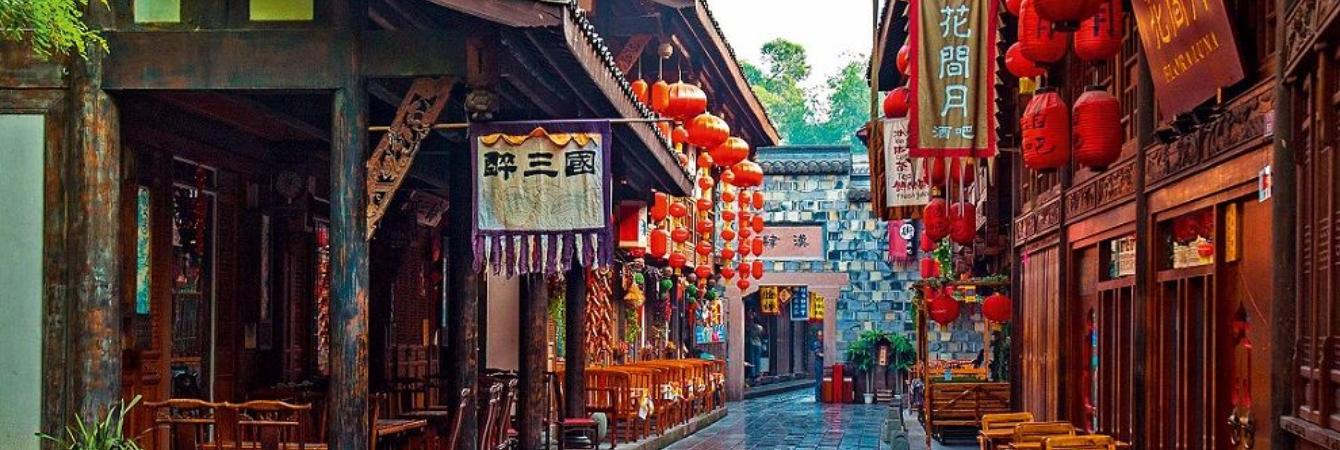Chengdu’s history as Silk Road hub imbues it with rich historical legacy

Chengdu is the starting point of the southern Silk Road. Today, Chengdu tradition embodies modern creativity.
The ancient Silk Road is known around the world, but few people know that Chengdu, Sichuan Province, is the starting point of the southern Silk Road. The southern Silk Road is more than 2,000 kilometers long, and began hundreds of years earlier than the northern Silk Road or the Silk Road in a general sense. The southern Silk Road passes by Yunnan Province through Myanmar and Tibet, ultimately reaching India and other South Asian countries.
Chengdu is not only the starting point of the southern Silk Road, but also a City of Gastronomy cited by a UNESCO list, the Best Tourist City of China (awarded by the World Tourism Organization), and also a renowned City for Intangible Heritage.
There are many recognizable relics that stand as cultural icons, including the gold scepter and bronze mask excavated in the Sanxingdui Ruin Site, Sichuan brocade and embroidery, along with other cultural icons like Chengdu lacquerware and even street food.
This city is both endowed with ancient traditions and modern creativity. Such a duality is deeply rooted in its soul and character. This is Chengdu.
It is recorded in The Records of the Grand Historian that Zhang Qian was the first Han Chinese to discover the southern Silk Road. Zhang was a diplomatic envoy in the Western Han Dynasty. Zhang went to the Western Regions, including modern Xinjiang and parts of Central Asia, and found bamboo sticks and Shu cloth. These relics mainly originated from the state of Shu, in today’s Sichuan Province, and its southwestern areas (Shu cloth refers to the silk produced in the state of Shu). These discoveries indicated that Zhang established a road from Southwest China to South Asia.
One of the main roads for the earliest external exchanges in ancient China, the southern Silk Road promoted exchanges between China and South Asian countries in the field of economics, culture, religion and art. As early as the Shang and Zhou dynasties, the ancient Shu initially expanded land routes to India. Chengdu’s silks have been exported to India, Central Asia, West Asia and Mediterranean region through Upper Burma and Assam in East India. China is the origin of silk, and Sichuan is the main source of Chinese silk. In the Warring States period, Sichuan brocade made a name in the nation and was sold to various places. When Chengdu’s silk was transported to all parts of Eurasia along the Silk Road, Chengdu played a significant role in connecting both the southern and northern Silk Road and promoted the formation, development and prosperity of ancient Silk Road economic belt.
Its geographical location on the southern Silk Road along with its open and inclusive character gives Chengdu an abundant cultural heritage, makes it a significant and famous historical and cultural city in China.
In addition, the southern Silk Road brought about plentiful food material, spices and food culture into Chengdu. Combined with external elements, Chengdu food absorbs various flavors and forms its unique style. In 2010, Chengdu became the first Asian city to be honored as a City of Gastronomy by UNESCO.
Just like Chengdu’s hot pot, its form varies from spicy hot pot to seafood flavor but its soul—which emphasizes quality, delicacy and creativity—has never changed. Just like Sichuan brocade, it not only inherits the skills of classical works but also encourages ideas and inspiration to combine traditional brocade with modern fashion. The pursuit of balancing traditions and modern creativity and vitality exist in the blood of Chengdu.
Li Yu is a reporter at the Chinese Social Sciences Today.
